We start the week by studying stocks that are currently building bases. I decided to specifically narrow the list down to stocks that are building cup shaped bases. Each stock presented today contains respectable fundamental characteristics such as strong earnings and revenue. Many, if not all of the stocks below have been covered within the past 6-12 months on the blog. A few of the stocks listed are building their first major bases since their spectacular up-trends in 2007.
Each stock has gained support along the 200-d (40-week) moving average while building their current base. The market has been moving higher but many pundits are calling this positive move a “head-fake” or slight pause in the main trend which is down (in their opinion). I couldn’t tell you if they are correct but buying stocks while they make new highs during a suspect market can be costly if it reverses. I prefer to buy stocks making new highs during an obvious up-trend. In any event, let’s go over a few technical rules for stocks building cup or saucer shaped bases.
On the weekly charts:
- Look for more up-weeks than down-weeks while the stock is building the base.
- Make sure that the volume is higher during the up-weeks than the down weeks.
- Volume should be below average or lighter during the down-weeks than they are during up-weeks.
- Stocks tend to make 3-5 bases during a long run over a few years. Be careful with stocks making late stage bases (4th base or later); they are more vulnerable to failure as most of the “smart money” (institutions) have rotated their cash into new stocks.
- Sell if a stock breaks out from a base on above average volume but suddenly reverses below the pivot point (ideal entry) that same day or a few days later.
- Beware of stocks trying to make news highs on above average volume but fail to end the day in the upper half of its daily range. This may be a reversal and a possible red flag.
Read an article I posted last January on How to Calculate a Stock’s Pivot Point:
How to Look for a Cup with Handle (chart #1):
Look for relatively quiet volume as the stock builds the left side of the cup. Volume at the base of the cup should be slightly higher than the left side as support is coming into the stock. The right side of the base should have above average volume with more up-days than down days. The handle will be the last part of the formation and should slope slightly downward with lower volume than the right side of the base. The pivot point will be slightly higher than the highest point of the right side of the base. All breakouts should occur on volume 100% greater than average daily volume although IBD does say that breakouts above 50% do qualify.
How to Look for a Saucer with Handle (chart #2):
Look for relatively quiet volume as the stock builds the left side of the saucer. A saucer looks similar to the cup-with-handle but the dip from the high to the low is smaller and usually longer in duration. Volume at the base of the saucer should be slightly higher than the left side as support is coming into the stock. At this point, the base may almost qualify as a flat base. The right side of the base should have above average volume with more up-days than down days but this does not have to be as prominent as the cup-with-handle. The handle will be the last part of the formation and should slope slightly downward with lower volume than the right side of the base. The pivot point will be slightly higher than the highest point of the right side of the base. All breakouts should occur on volume 100% greater than average daily volume.
All stocks and charts are listed in alphabetical order:
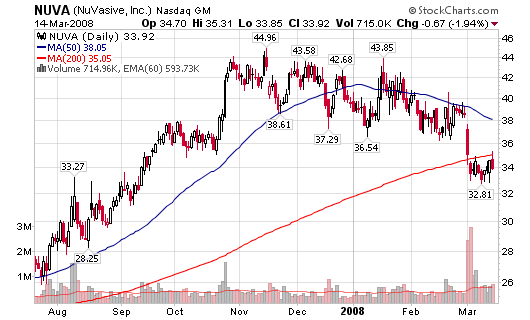
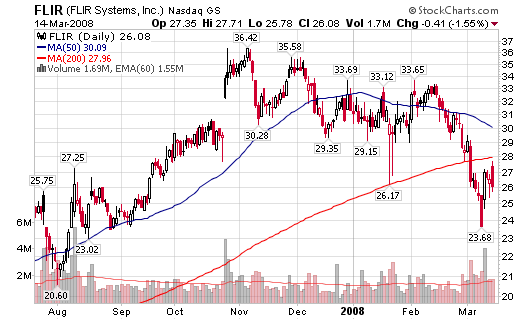
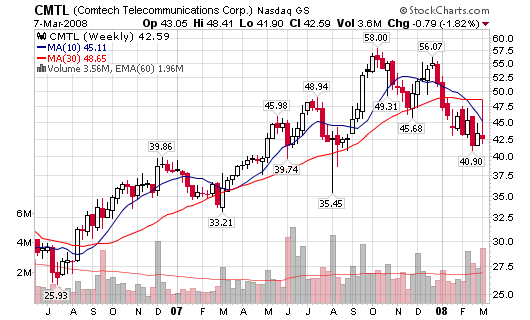
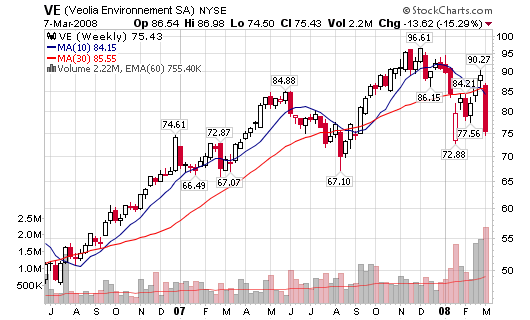
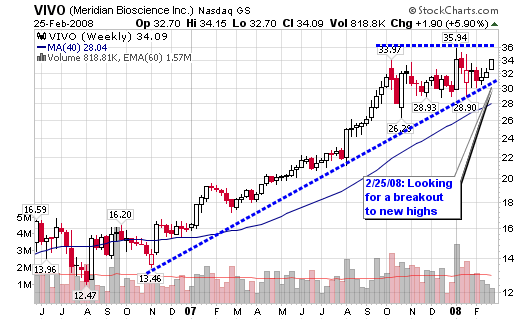

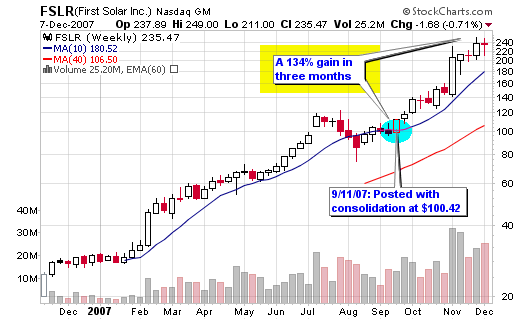


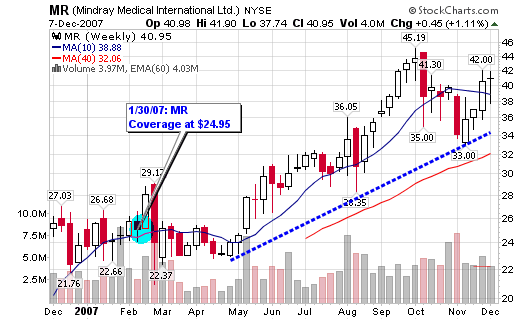

Connect with Me